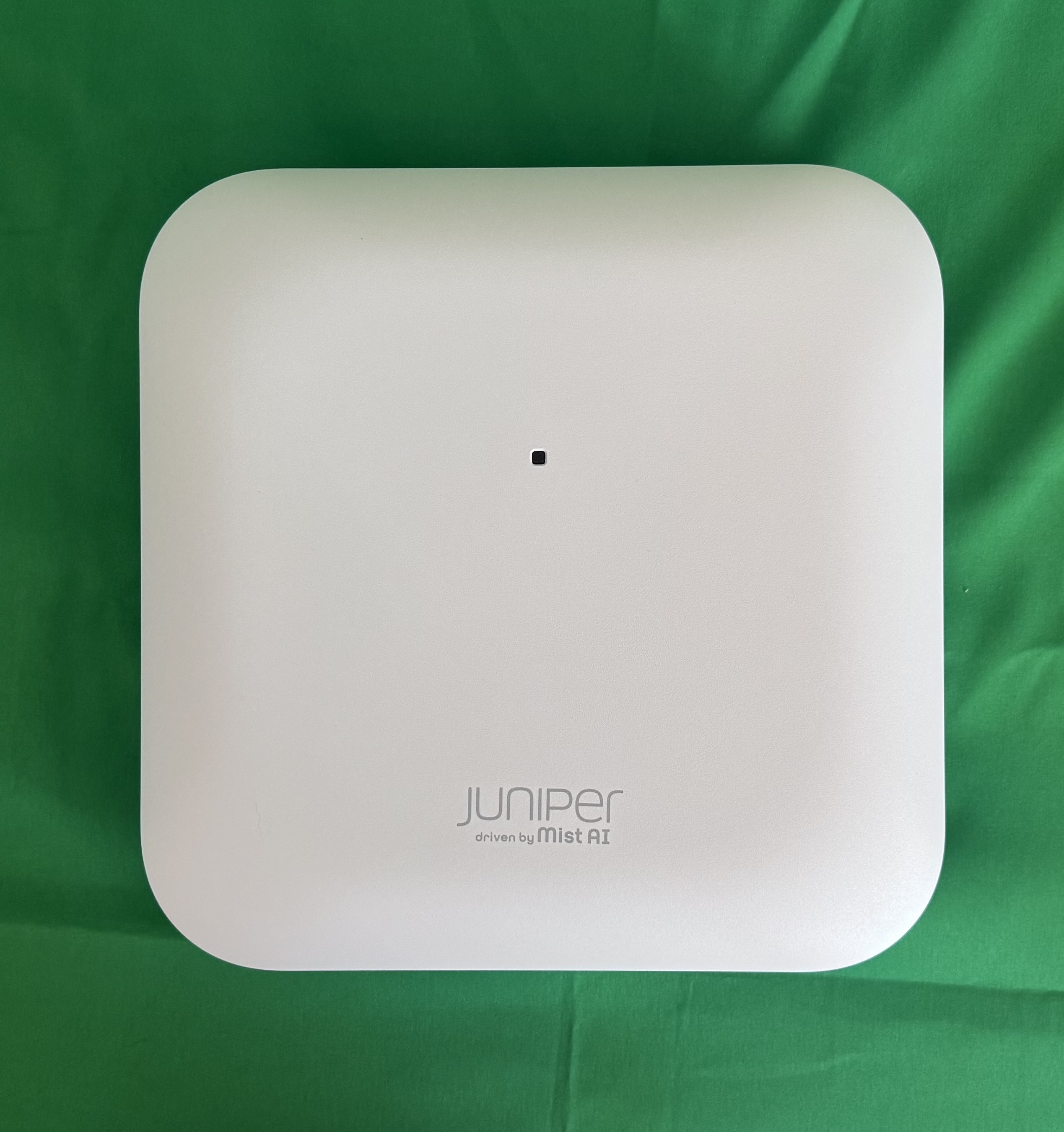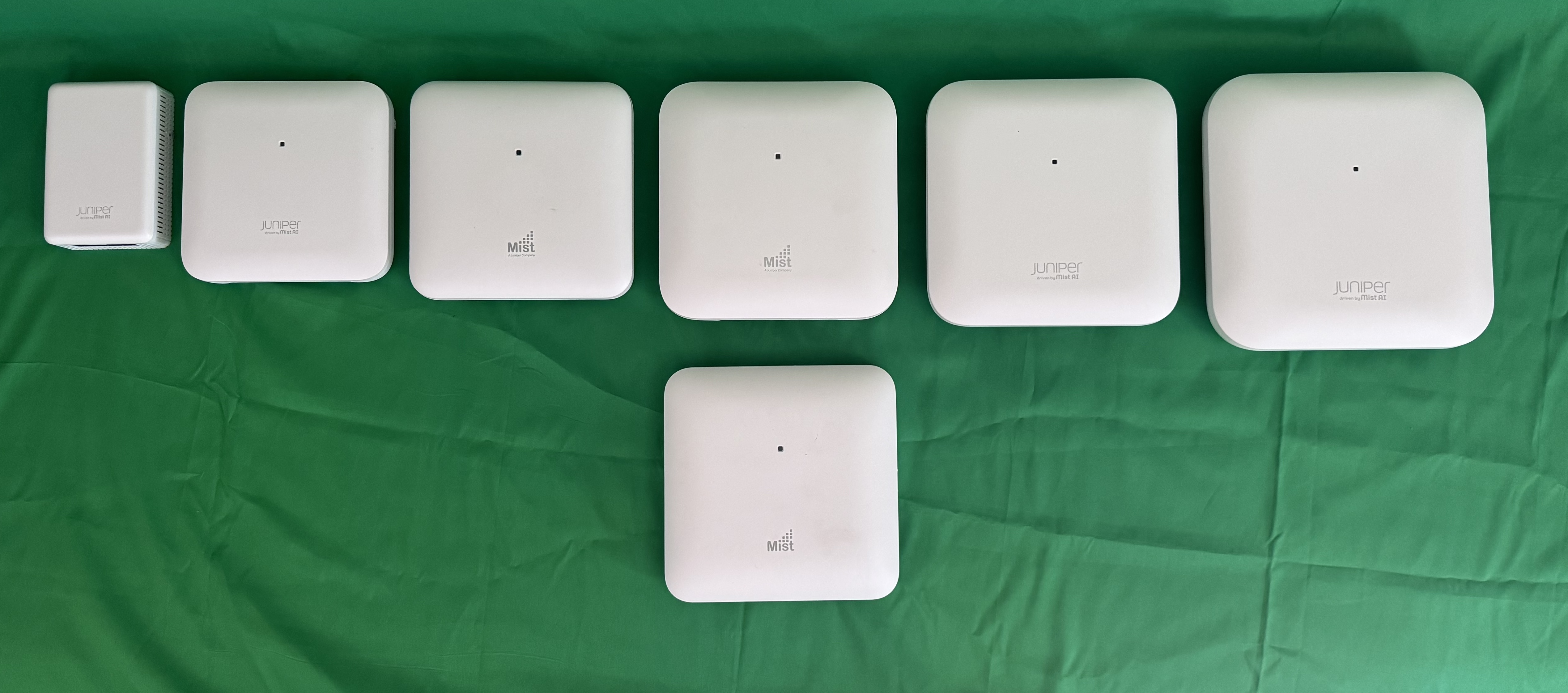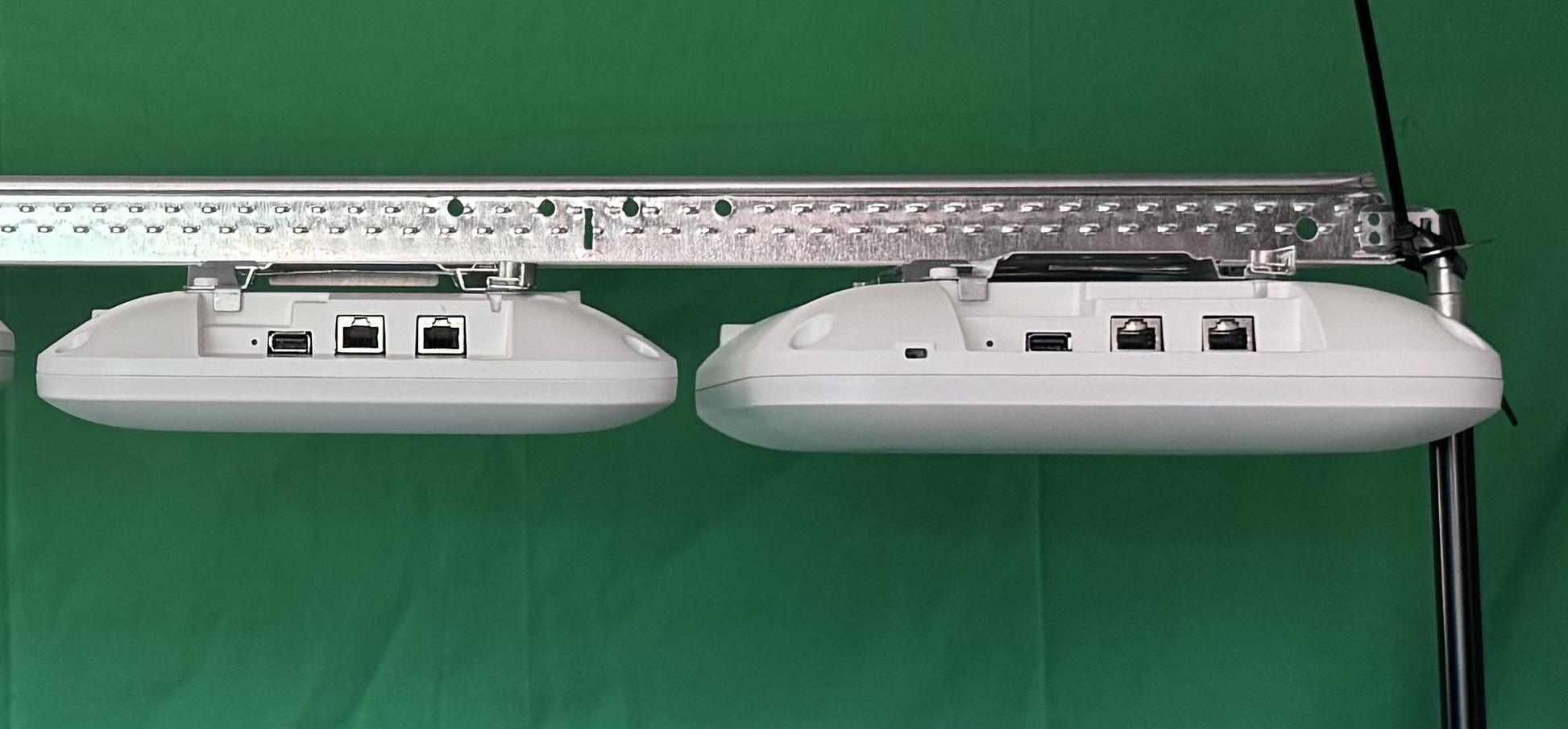 I've written about the AP47 previously, but I finally got my hands on one! While I just got the full lab upgraded to AP45's last fall, I received an AP47 from my friends at Juniper a couple of weeks ago while I was on the road for work. They asked me to let folks know what I think of it and see how it compares. And while I'm not going to be rushing into upgrading my AP45s, that's mostly because the Wi-Fi 7 market isn't quite there yet (at least in my VERY Apple-centric home), in my opinion. But Allyn, you say, don't you recommend these APs to clients already? Well yea. However, that's mostly for future-proofing and longevity. And an Enterprise environment is way different than a home or even a home lab. In an enterprise environment, when performing a Wi-Fi hardware refresh, it's almost always best to opt for the latest models. You're looking for around 5 years of longevity. Planning for the newer versions of Wi-Fi ensures a good user experience, even near the end of the APs' lifespan. The other reason is that, with the rapid release of new Wi-Fi versions, many APs are being designed to support the expected features in the standard. So, should the standard change, some of the features may not be available, or may not be *quite* as good as hoped. So when the next standard AP comes out, it includes those upgrades. The short version of that is that the latest AP model is usually very good at meeting the previous standard. For example, a Wi-Fi 6E AP is a really good Wi-Fi 6 AP, and a Wi-Fi 7 AP is a really good Wi-Fi 6E AP.
I've written about the AP47 previously, but I finally got my hands on one! While I just got the full lab upgraded to AP45's last fall, I received an AP47 from my friends at Juniper a couple of weeks ago while I was on the road for work. They asked me to let folks know what I think of it and see how it compares. And while I'm not going to be rushing into upgrading my AP45s, that's mostly because the Wi-Fi 7 market isn't quite there yet (at least in my VERY Apple-centric home), in my opinion. But Allyn, you say, don't you recommend these APs to clients already? Well yea. However, that's mostly for future-proofing and longevity. And an Enterprise environment is way different than a home or even a home lab. In an enterprise environment, when performing a Wi-Fi hardware refresh, it's almost always best to opt for the latest models. You're looking for around 5 years of longevity. Planning for the newer versions of Wi-Fi ensures a good user experience, even near the end of the APs' lifespan. The other reason is that, with the rapid release of new Wi-Fi versions, many APs are being designed to support the expected features in the standard. So, should the standard change, some of the features may not be available, or may not be *quite* as good as hoped. So when the next standard AP comes out, it includes those upgrades. The short version of that is that the latest AP model is usually very good at meeting the previous standard. For example, a Wi-Fi 6E AP is a really good Wi-Fi 6 AP, and a Wi-Fi 7 AP is a really good Wi-Fi 6E AP.
With all of that said, there are numerous articles from my colleagues on the AP47's features, functions, and use cases. I figured I'd focus on something a little different. The physical aspect of it. When the AP was released, people focused on the fact that it was bigger and heavier (though not as big and heavy as some other vendors' monster APs). But is that size really a big deal? How noticeable is it? I figured I'd take a look and see. And while I don't have ALL of the Juniper Mist AP models, thanks to some help from Jim Vajeda on the AP24 and 33, in my lineup I have an AP12, AP24, AP33, AP41, AP43, AP45, and of course the AP47. Now, I discovered during setting up for pictures that I can't fit all of these models on a single 4ft section of ceiling rail. So the AP41 got left out (since it's just an AC Wave 2 AP). And while it's fun to have the AP12 in the pictures, since it has a different use case (wall mount), I'll leave it out of the comparisons and focus on the ceiling mount APs. Finally, as my American, now Norwegian, friend Robert Boardman pointed out, I don't have any outdoor AP models. So, this is essentially a comparison of some of the indoor ceiling mount APs.
Before we dig in, here's a link to the Juniper Access Points page where you can get the full details on all of the APs.So let's take a look at the official specs (I copied these straight from the datasheets, so display inconsistencies are from there):
- AP47:
- AP47, AP47E : 254 mm x 254 mm x 60 mm / 10” x 10” x 2.36”
- AP47, AP47D, AP47E - 2.0 kg / 4.41 lbs
- AP45:
- 230 mm x 230 mm x 50 mm
- AP45 is 2.01 kg, AP45E is 1.97 kg
- AP43:
- 222 x 222 x 53 mm (8.74 x 8.74 x 2.09 in)
- 1.39 kg (3.06 lbs) excluding mount and accessories
- AP41:
- 215 x 215 x 52 mm (8.46 x 8.46 x 2.05 in)
- 1.6 kg (3.53 lbs) excluding mount and accessories
- AP33:
- 202 x 202 x 44 mm (7.95 x 7.95 x 1.73 in)
- 0.98 kg (2.16 lbs) excluding mount and accessories
- AP24:
- 185 mm x 185 mm x 39 mm
- .75 kg
So, looking at the specs, we definitely see some size increases in the AP47. It is the largest indoor AP yet. But given all of the features packed into it, that shouldn't come as any surprise. It is also the biggest increase between generations. The previous two jumps (AP41 to AP43 and AP43 to AP45) were at 7 and 8 mm in length and width, respectively. The depth is interesting, as you can see an overall decrease from AP43 to AP45 of 3mm after a small 1mm increase from AP41 to AP43. With the AP47 we see all 3 of those dimensions jump up. 24mm in length and width, and 10mm in depth. As far as weight goes, the AP47 shaved a fraction of a kilo off (10 whole grams!) from the AP45, which can only be attributed to efficiencies in the new internal components since the shell itself is bigger.
So overall, while the AP47 is a bit "chonkier" than the previous generations, it's not a whole lot. The gains are also in physical size, but not weight, which would be my bigger concern, honestly. Since these APs are designed for ceiling mounting, the length and width are typically not an issue. The weight however can be a concern. Because, while we'd love to think that ceilings are nice and strong, the reality is that I've seen a lot of really bad ceilings and ceiling installations. From zip-tied to a random wire to nailed (yes, NAILED) into a piece of drywall, you can find some really fun AP installs. So if the weight gets too high, you might start seeing more APs self-destructing on the floor below, or worse, bouncing off of heads. And while 2 kilograms isn't ultra-light, it's not horrible.
But, with all of these words, let's see some pictures of side-by-side comparisons! The order is AP24-AP33-AP43-AP45-AP47 (the AP41 is below the AP43 in the top-down view)
What about just the AP45 and AP47:
To wrap this up, I think the only folks that will be really concerned about the modest size increases in the newest AP are probably the architects who are trying to hide the APs. I would definitely ensure that I check the compatibility of AP enclosures, though. I could see potential issues with those that were already tight fits.











